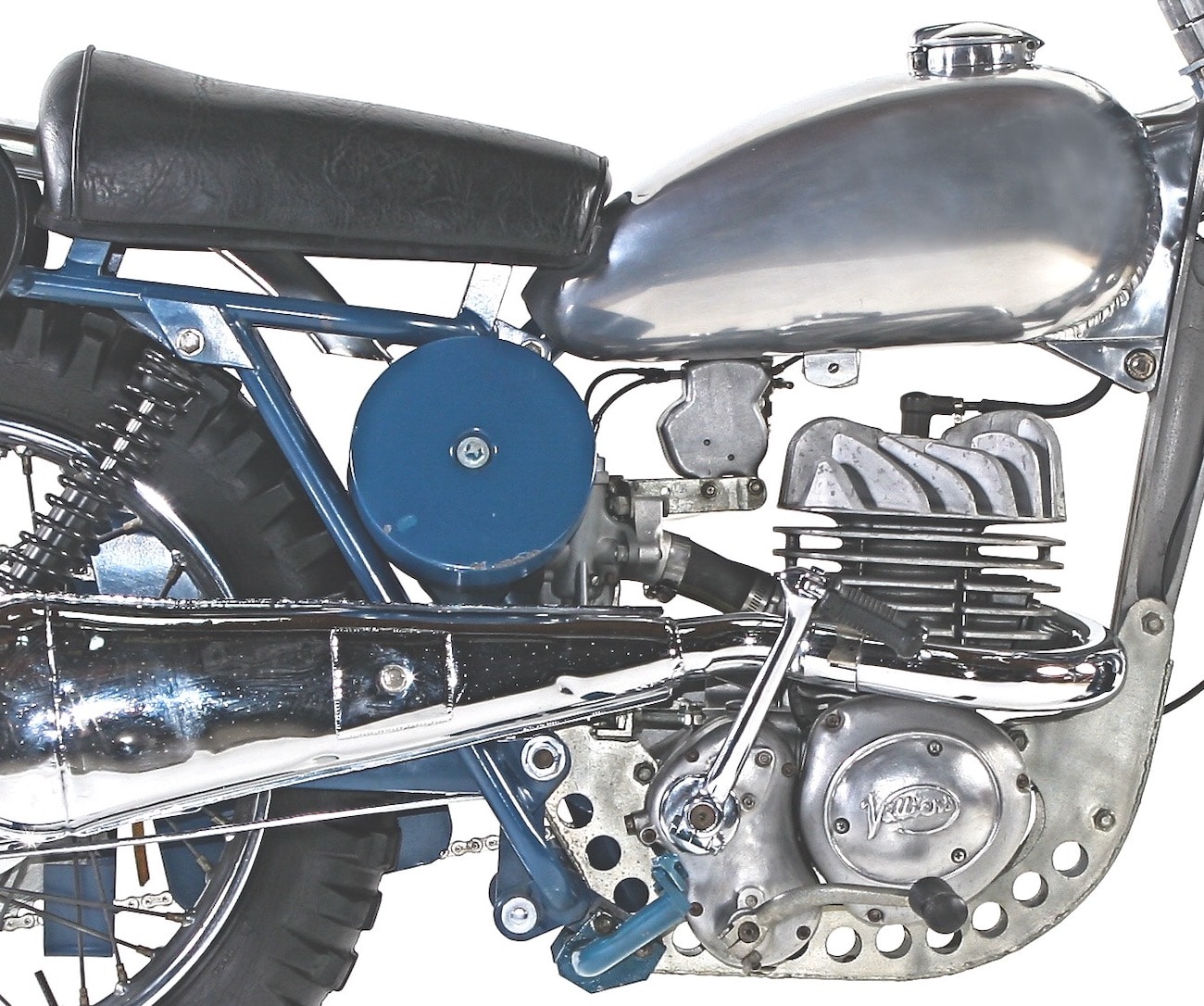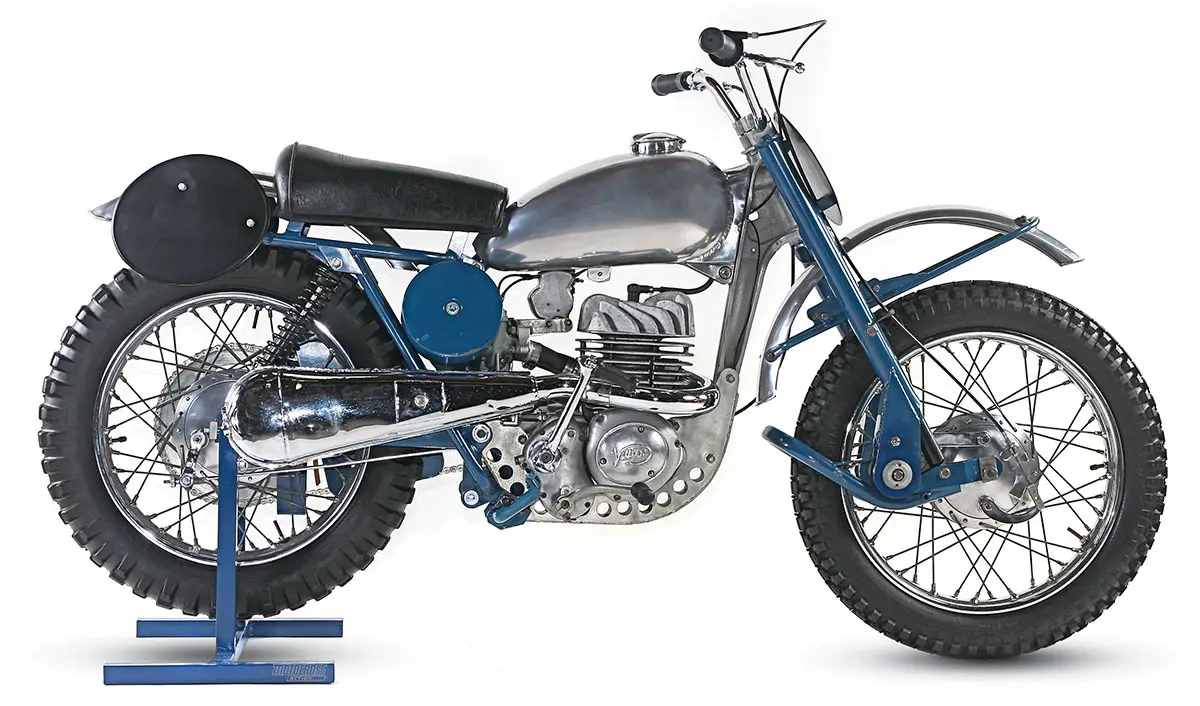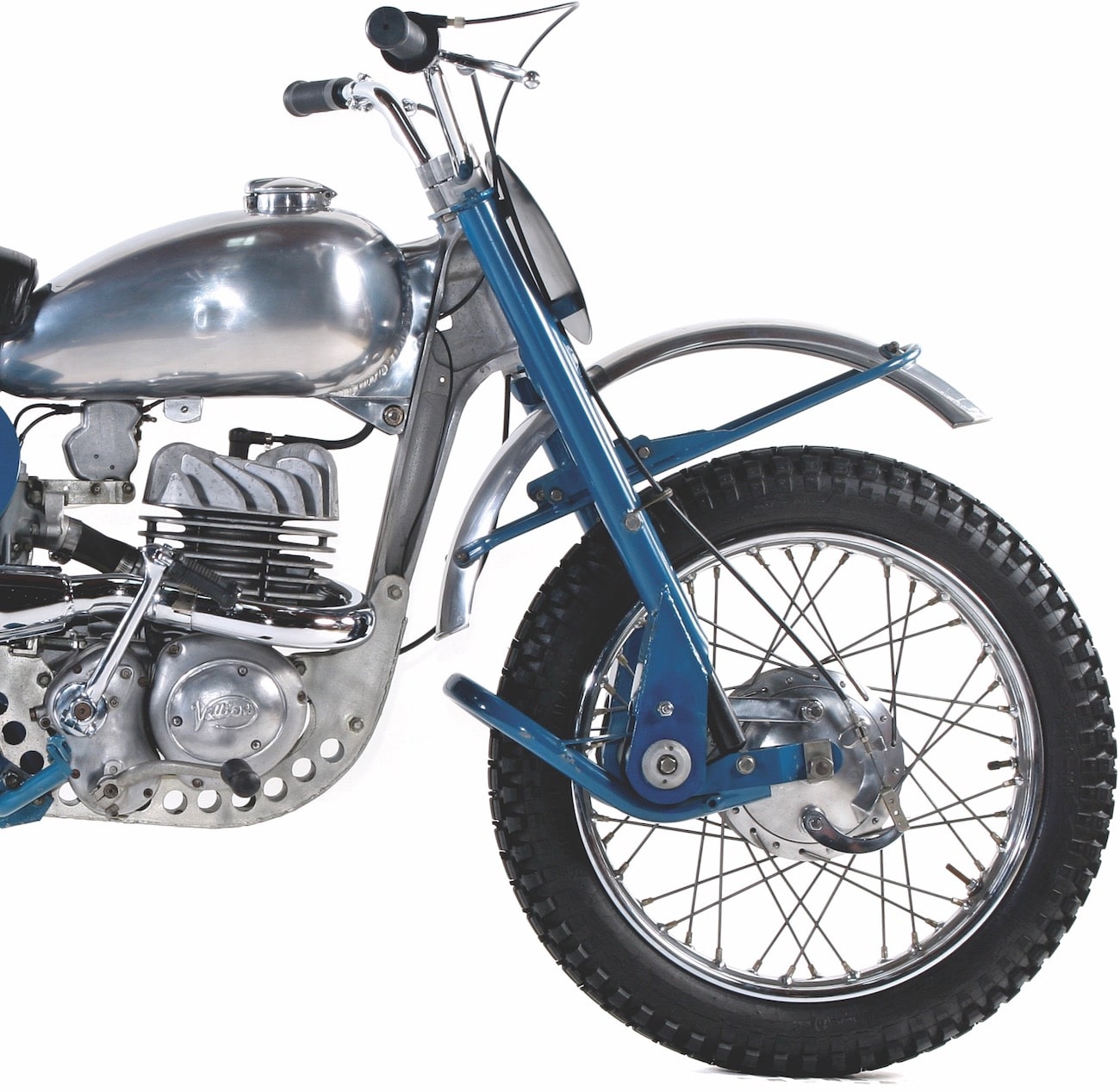CLASSIC MOTOCROSS IRON: 1963 GREEVES STARMAKER 24ME
BY TOM WHITE
By the end of the 1962 season, the Greeves-modified 34A Villiers engine used by the factory riders was showing its age. Greeves had increased the power by 25 percent over the original Villiers engine by using its own new aluminum cylinder, larger carburetor and improved exhaust design. Unfortunately, transmission, clutch and crankshaft problems were all too common. Out of frustration with the Villiers engine, Greeves started development on its own engine. The twin carb Villiers Starmaker engine didn’t do justice to Greeves creative half aluminum frame.
The twin carb Villiers Starmaker engine didn’t do justice to Greeves creative half aluminum frame.
Not wanting to lose the Greeves business, Villiers assigned engineers Bernard Hooper and John Favill to develop an all-new engine, originally dubbed the Villiers “Scrambling,” but the name was eventually changed to “Starmaker.” It was radically different from the previous 34A Villiers engine, which had reached its performance limit. With a strengthened crank, duplex primary chain, redesigned transmission, cast-in cast iron-cylinder liner, narrow piston rings, large-diameter wrist pin, full-circle cranks, thin-section forged-steel connecting rod, caged roller big-end bearings and a 12:1 compression ratio, the Villiers Starmaker was a big step up from the old 34A engine.
The Starmaker clutch was the first motorcycle clutch to use a diaphragm (Belleville washer) spring. It controlled two sintered bronze friction plates and one steel intermediate plate. And, for the first time, a quieter exhaust was fitted to meet the new ACU sanctioning-body noise requirements. The most notable feature of the Villiers Starmaker was the use of two Amal Monobloc 389 carburetors that were set to open progressively. The twin carb concept was supposed to provide better bottom and more top. Power output was 25 horsepower at 6500 rpm.
In 1963 Greeves introduced the Starmaker 24ME model, but the British racing public shied away from it, preferring to buy and race the less expensive Greeves 24MD that still came with the single-carb Villiers 32A engine. Total 1963 production of the Greeves Starmaker 24ME was only 89 units. Bert Greeves did not believe in the Starmaker engine—and Bert was right. The machine was so bad that factory rider and two-time European 250 Champion Dave Bickers switched in the middle of the 1963 GP season to a Husqvarna (with Greeves leading-link forks on it). The twin-carb Starmaker was the end of the Greeves/Villiers relationship that had started in 1953. The relationship was terminated after the 1963 season. Greeves began manufacturing its own engines and called the new bike the Greeves Challenger. It was enough to lure Dave Bickers back to Greeves for the 1964 Grand Prix season.







Comments are closed.